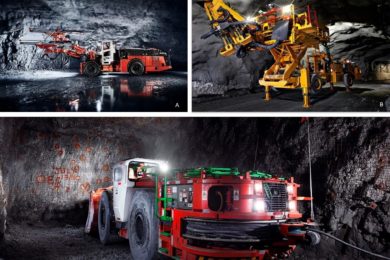A recent survey of miners and mining original equipment manufacturers (OEMs) has shown that electrification of mines offers a lot more than lower carbon emissions and improved worker benefits.
The survey, commissioned by EY and conducted by the Sustainable Minerals Institute at The University of Queensland (Australia) and The Norman B. Keevil Institute of Mining Engineering at The University of British Columbia (Canada), deduced that reaping the full benefits of an electricity-powered mining future would require “reskilling, reaching out across sectors and rethinking the fundamentals of mine design”, EY said.
Paul Mitchell, EY Global Mining and Metals Leader, said the mining sector was on the verge of an electrification revolution, driven by significant cost reduction potential, lowered carbon emissions and improved worker health benefits.
“This is critically important, given the World Health Organisation has declared that diesel particulates now belong in the same deadly category as asbestos, arsenic and mustard gas,” he said.
Four key themes emerged from the survey, according to EY.
- Electrified mines improve economics and strengthen licence to operate;
- Collaboration will unlock better electrification solutions;
- Mine design needs a rethink to build in optionality for future innovation, and;
- Electrification needs different skills, and advances technology deployment.
EY explained these four in more detail:
“Demand for carbon reduction in the sector is inevitable, and electrification is one way to achieve it,” the company said. “Diesel engines cannot be replaced with carbon-generating electricity and therefore electrification needs to be accompanied with a move to renewable power.
“The survey finds that electrification reduces not only operational costs, but also up-front capital costs because it reduces the infrastructure needs of ventilation shafts in underground mines. More significantly, the reduction of diesel particulates results in improvement to worker health and safety.”
Partnerships and co-creation of solutions with OEMs, other mining companies and governments are needed to successfully integrate electrification in mines, according to EY.
“The survey finds that, in the case of electrification, miners are clear that they can’t go it alone. This is leading to a more open perspective around the role of suppliers as strategic partners, which expands the possibilities for miners to benefit through innovation, cost reduction and competitive advantage.”
Newmont Goldcorp has taken such an approach at its Borden gold project, in Ontario, Canada – partnering with Sandvik and MacLean Engineering on developing what it says will be the world’s first all-electric underground mine – while Nouveau Monde Graphite has built up a taskforce of its own to progress its plans for an all-electric open-pit graphite mine in Quebec, Canada.
In terms of mine design, decoupling mines from diesel is not an easy task. This is due to the diverse range of technical and financial challenges in mining various deposits.
EY said: “Getting full value out of electrification requires a thorough consideration and understanding of the technology road map, in parallel with the strategic plan for the mine. The survey highlights the need for a phased implementation with a flexible design that provides for technology improvements of the future.”
And, lastly, mine electrification will require different worker skills as it enables other advanced technologies, requiring less maintenance and human intervention, according to EY.
“Analysis of the survey findings reveals there will be increasing demand for data and digital literacy skills across all phases of the mining value chain, as the human-to-machine interface evolves and becomes more prevalent,” the company said. “In developing economies, this means challenging the assumption that a mine provides employment only for people doing physical labour.”
Mitchell added: “It is important to start thinking about building agility into mine design to leverage the potential benefits in asset flexibility, lower ventilation requirements and the human footprint.
“The future of electrification in mines requires a paradigm shift in thinking – from existing known and proven technologies to new emerging technologies. We must realise that the challenges of the sector can be solved faster by collaboration – and a robust strategy, underpinned by gaining the right capabilities and an agile approach, is critical.”










